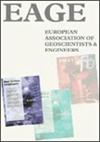基于深度学习的地震采集面波频散曲线提取方法
IF 1.6
4区 地球科学
Q3 GEOCHEMISTRY & GEOPHYSICS
引用次数: 0
摘要
多道面波分析是一种地震方法,用于获取近地表剪切波速度的有用信息。这种方法的一个基本步骤是从频散谱中提取频散曲线,后者通常是通过对记录的震波集束采用特定的处理算法获得的。虽然提取过程可以在一定程度上实现自动化,但通常需要进行大量的质量控制,这对于大型数据集来说可能非常困难。我们提出了一种新方法,利用深度学习来识别地震震源采集与其相关频散曲线(基频和一阶高频模式)之间的直接映射,因此无需计算频散谱。给定一个感兴趣的地点,利用当地地质的先验知识创建一组一维压缩和剪切速度及密度模型;然后对地震震源采集和雷利波相位频散曲线进行数值建模,并用于训练简化的残差网络。结果表明,所提出的方法可在合成测试数据集上实现高质量的频散曲线预测,并最终成功应用于野外数据集。此外,还介绍了各种不确定性量化和卷积神经网络可视化技术,以评估推理过程的质量,更好地理解网络的基本学习过程。对合成数据和现场数据的预测频散曲线都进行了反演;在后一种情况下,所得到的剪切波速度模型是可信的,并与该地区先前的地质知识相一致。最后,将人工选取的基本模式与我们模型的预测结果进行比较,可以作为建议工作流程性能的基准。本文章由计算机程序翻译,如有差异,请以英文原文为准。
Deep learning‐based extraction of surface wave dispersion curves from seismic shot gathers
Multi‐channel analysis of surface waves is a seismic method employed to obtain useful information about shear‐wave velocities in the near surface. A fundamental step in this methodology is the extraction of dispersion curves from dispersion spectra, with the latter usually obtained by applying specific processing algorithms onto the recorded shot gathers. Although the extraction process can be automated to some extent, it usually requires extensive quality control, which can be arduous for large datasets. We present a novel approach that leverages deep learning to identify a direct mapping between seismic shot gathers and their associated dispersion curves (both fundamental and first higher order modes), therefore by‐passing the need to compute dispersion spectra. Given a site of interest, a set of 1D compressional and shear velocities and density models are created using prior knowledge of the local geology; pairs of seismic shot gathers and Rayleigh‐wave phase dispersion curves are then numerically modelled and used to train a simplified residual network. The proposed approach is shown to achieve high‐quality predictions of dispersion curves on a synthetic test dataset and is, ultimately, successfully deployed on a field dataset. Various uncertainty quantification and convolutional neural network visualization techniques are also presented to assess the quality of the inference process and better understand the underlying learning process of the network. The predicted dispersion curves are inverted for both the synthetic and field data; in the latter case, the resulting shear‐wave velocity model is plausible and consistent with prior geological knowledge of the area. Finally, a comparison between the manually picked fundamental modes with the predictions from our model allows for a benchmark of the performance of the proposed workflow.
求助全文
通过发布文献求助,成功后即可免费获取论文全文。
去求助
来源期刊

Near Surface Geophysics
地学-地球化学与地球物理
CiteScore
3.60
自引率
12.50%
发文量
42
审稿时长
6-12 weeks
期刊介绍:
Near Surface Geophysics is an international journal for the publication of research and development in geophysics applied to near surface. It places emphasis on geological, hydrogeological, geotechnical, environmental, engineering, mining, archaeological, agricultural and other applications of geophysics as well as physical soil and rock properties. Geophysical and geoscientific case histories with innovative use of geophysical techniques are welcome, which may include improvements on instrumentation, measurements, data acquisition and processing, modelling, inversion, interpretation, project management and multidisciplinary use. The papers should also be understandable to those who use geophysical data but are not necessarily geophysicists.
 求助内容:
求助内容: 应助结果提醒方式:
应助结果提醒方式:


